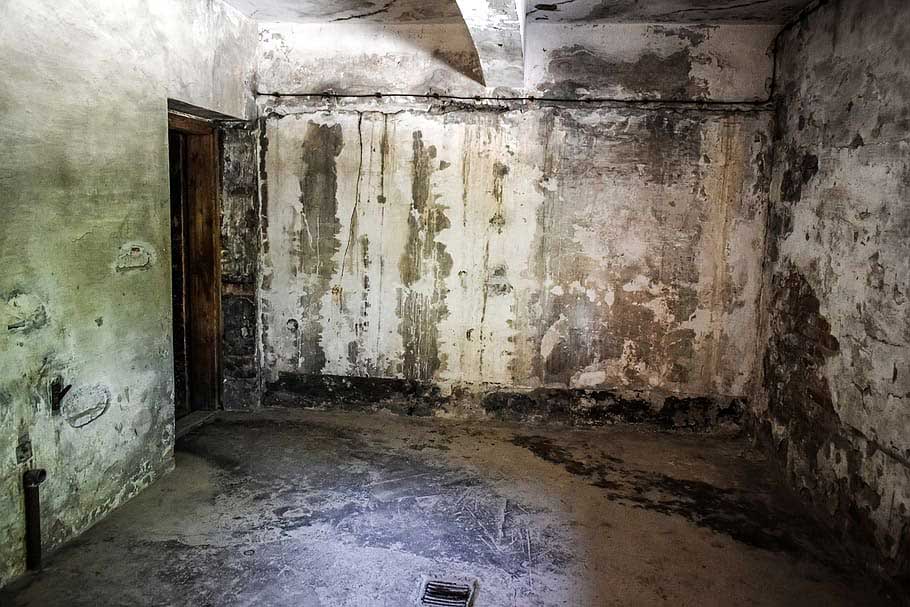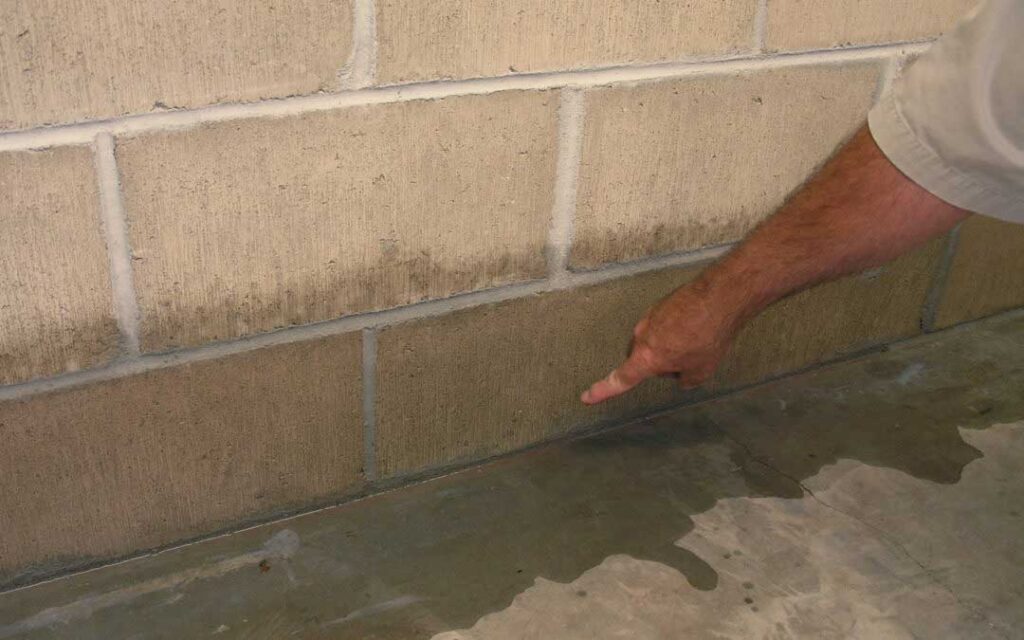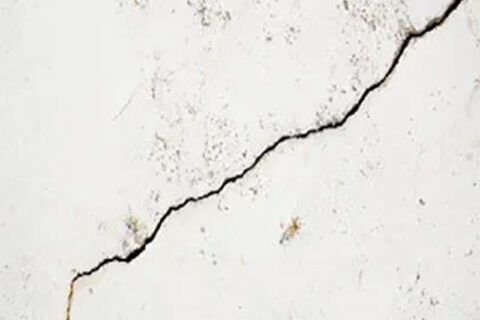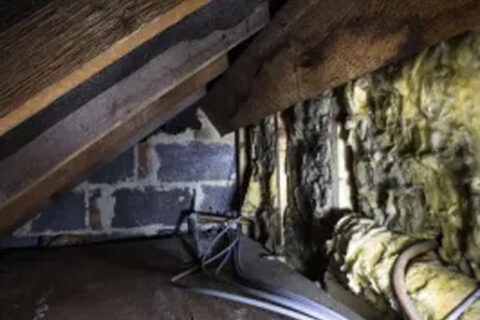Signs of Hidden Water Damage, Evans, PA
Signs of Hidden Water Damage
1. A Musty Odor in Your Basement
A musty odor is often a sign of a mold infestation. Mold grows in areas that are damp. If you notice a musty smell, this is a good indication of high moisture levels and possibly water damage. If the musty smell is coming from your basement, you should have your basement inspected for leaks and consider basement waterproofing to avoid further damage and mold remediation.

A musty odor is often a clear sign of hidden water damage and the presence of mold or mildew. Mold and mildew are types of fungi that thrive in damp, humid environments and are often found in areas that have experienced water damage. If you detect a musty odor in your home, it is likely that mold is present and growing in areas with high moisture levels.
Mold can be hazardous to your health, causing respiratory problems, allergies, and other health issues. People who are sensitive to mold may experience symptoms such as sneezing, runny nose, itchy eyes, and skin rashes. In more severe cases, mold exposure can cause asthma attacks, lung infections, and even neurological damage.
If you detect a musty odor in your basement or other areas of your home, it is important to have the basement dry service area of your home inspected by a professional. They will be able to identify the source of the odor and assess the extent of the damage. If mold is present, they will recommend a course of action to remove the mold and prevent it from returning.
In addition to professional inspections, there are steps you can take to prevent water damage and mold growth in your home. Make sure to keep humidity levels low by using a dehumidifier, especially in areas such as the basement, which are prone to dampness. Ensure proper ventilation in bathrooms, kitchens, and laundry rooms to prevent moisture buildup.
Regularly inspect and repair leaks in your home, including those in pipes, roofs, and windows. Be sure to clean up any spills or leaks immediately to prevent water from seeping into walls, floors, or ceilings and causing damage.
Investing in basement waterproofing is also an effective way to prevent water damage and mold growth in your home. Waterproofing involves sealing cracks and installing drainage systems to redirect water away from your home’s foundation. This helps to keep moisture out of your basement and prevent mold and mildew from growing.
In conclusion, a musty odor in the basement to dry your home is a sign of hidden water damage and the presence of mold or mildew. If you detect a musty odor, it is important to have your home inspected by a professional and take steps to prevent further water damage and mold growth. Regular maintenance and investing in basement waterproofing are effective ways to protect your home and keep your family safe.
2. Water Stains on the Wall, Floor, or Ceiling
Water stains are a more obvious sign of water damage. If these water stains are occurring in the walls, floor or ceiling of your basement, you could have a water seepage problem. You should get in touch with a top waterproofing company or contractor as soon as possible. You may wake up to a flooded basement soon.
Water stains on walls, floors, or ceilings are a clear indication of water damage in your home. These stains can be caused by various sources of water intrusion, such as leaks in pipes or roofs, cracks in the foundation, or poor drainage systems. If left untreated, water stains can lead to serious structural damage and compromise the safety and health of your home.
Water stains on walls may appear as discoloration or patches of dark spots, usually near the baseboards or corners of the room. Water stains on floors can cause discoloration, warping, and buckling, especially on hardwood floors. Water stains on ceilings are often yellowish-brown in color and can be accompanied by peeling or cracking paint.
If you notice any water stains in your home, it is important to address them immediately. Ignoring water stains can lead to more significant water damage and mold growth, which can pose health risks to you and your family.
One of the first steps in addressing water stains is to identify the source of the water intrusion. This can be done through a professional inspection or by locating any visible signs of leaks or damage in the home. Once the source is identified, repairs should be made promptly to prevent further water damage.
Depending on the extent of the water damage, you may need to remove and replace any damaged materials such as drywall, flooring, or ceiling tiles. It is important to ensure that all affected materials are properly dried and disinfected to prevent mold growth.
Preventative measures can also be taken to avoid water damage and stains in the first place. Regular inspections and maintenance of pipes, roofs, and drainage systems can prevent leaks and water intrusion. Installing gutters and downspouts can also redirect rainwater away from the foundation of your home.
In a basement dry in addition, investing in basement waterproofing can help prevent water intrusion and subsequent damage. This involves sealing any cracks or gaps in the foundation and installing drainage systems to redirect water away from your home.
In conclusion, water stains on walls, floors, or ceilings are a clear sign of water damage in your home. It is important to address these stains promptly to prevent further damage and mold growth. Identifying the source of the water intrusion and making necessary repairs is crucial, and preventative measures such as regular maintenance and basement waterproofing can help prevent water damage in the future.
3. Blistering of Wallpaper or Paint
If you have a finished, wet basement, moisture may be accumulating between the wallpaper or paint and the surface of the wall. In such instances, you may notice that the wallpaper or paint forms blisters in some parts. This occurs because the water has compromised the bond between the paint or wallpaper and the wall. You can peel the paint or wallpaper blisters to see if the wall is damp in these areas.
Blistering of wallpaper or paint is another sign of hidden water damage that homeowners should be aware of. This occurs when water seeps into the walls and accumulates between the paint or wallpaper and the surface of the wall. As a result, the bond between the paint or wallpaper and the wall is compromised, and blistering or bubbling may occur.
If you notice blistering of wallpaper or paint, it is important to investigate the source of the water damage and address it promptly. Ignoring this issue can lead to further water damage and mold growth, which can pose health risks to you and your family.
The first step in addressing blistering wallpaper or paint is to determine the extent of the water damage. You can peel back the affected areas to see if the wall is damp underneath. If it is, then the water damage may be more extensive than initially thought, and it is important to investigate the source of the water intrusion.
Common sources of water intrusion include leaks in pipes or roofs, cracks in the foundation, and poor drainage systems. Once the source of the water intrusion is identified, repairs should be made promptly to the foundation to repair the drainage system to prevent further water damage.
If the blistering is extensive, it may be necessary to remove and replace the affected wallpaper or paint. It is important to properly dry and disinfect the walls before installing new wallpaper or paint to prevent mold growth.
Preventative measures can also be taken to avoid blistering of wallpaper or paint in the future. Regular inspections and maintenance of pipes, roofs, and drainage systems can prevent leaks and water intrusion. Installing gutters and downspouts can also redirect rainwater away from the foundation of your home.
Another effective preventative measure is to invest in basement, waterproofing and foundation,. This involves sealing any cracks or gaps in the foundation and installing drainage systems to redirect water away from your home. By investing in basement waterproofing and foundation,, you can help prevent water intrusion and subsequent damage to your home.
In conclusion, the blistering of wallpaper or paint is a sign of hidden water damage that homeowners should not ignore. Investigating the source of the water damage and addressing it promptly is crucial to prevent further damage and mold growth. Preventative measures such as regular maintenance and basement waterproofing can also help avoid the blistering of wallpaper or paint in the future.
4. Floor-Damaged Foundation Waterproofing Services
Moisture can damage the floor not only in the basement but also in the upper levels. This is especially the case for hardwood floors. You may notice that the floor is cracking, buckling or forming stains for no obvious reason. Ensure your basement is inspected for water seepage and invest in basement waterproofing before you replace or repair your floors.

Floor damage is a common sign of water damage in a home. Water can cause significant damage to flooring, especially hardwood floors. If you notice that your floor is cracking, buckling, or forming stains for no apparent reason, it may be a sign of hidden water damage.
Water damage to floors can occur in any part of the house, including the basement. If the basement is unfinished, it may be easier to identify water damage to the floors. However, if the basement is finished, the damage to the basement floor or the basement walls may be hidden under carpets or other flooring materials, making it more challenging to detect.
Water damage to the foundation repair your floors can be caused by a variety of factors, including leaks in pipes or roofs, poor drainage, and cracks in the foundation. If you suspect water damage to the foundation repair your floors, it is essential to investigate the cause of the damage and address it promptly.
One of the first steps in addressing floor damage is to identify the source of the water intrusion. In some cases, the damage may be caused by leaks in pipes or roofs that require repair. In other cases, the damage may be caused by poor drainage around the foundation of your home. If the water damage is caused by cracks in the concrete floor or foundation, it may be necessary to repair the foundation to prevent further water intrusion.
Once the source of the water intrusion has been identified and addressed, it is important to dry out the affected area promptly to prevent mold growth. Depending on the extent of the water damage, the floor may need to be replaced. In some cases, it may be possible to salvage the existing floor by sanding and refinishing it.
To prevent floor damage in the future, it is important to take preventative measures. Regular inspections and maintenance of pipes, roofs, and drainage systems can help prevent leaks and water intrusion. Installing gutters and downspouts can also redirect rainwater away from the foundation of your home, reducing the risk of water damage to floors and other parts of the house.
Basement waterproofing is another effective preventative measure that can help prevent water damage to floors. Waterproofing involves sealing any cracks or gaps in the basement wall foundation and installing drainage systems to redirect water away from your home. By investing in basement waterproofing, you can help prevent water intrusion and subsequent damage to your home.
In conclusion, floor damage and mold testing is a sign of hidden water damage that homeowners should not ignore. Investigating the cause of the damage and addressing it promptly is crucial to prevent further damage and mold growth. Preventative measures such as regular maintenance and basement waterproofing can also help avoid floor damage and mold testing in the future.
If you have noticed any of the signs above, you’re most likely dealing with wet basement or crawl spaces with hidden water damage. The best way to resolve the issue is to put foundation repair specialists or waterproofing services your basement or crawl space.
Contact us now Professional Basement Waterproofing Services, Everdry Waterproofing of Pittsburgh Today! (800) 388-3837


